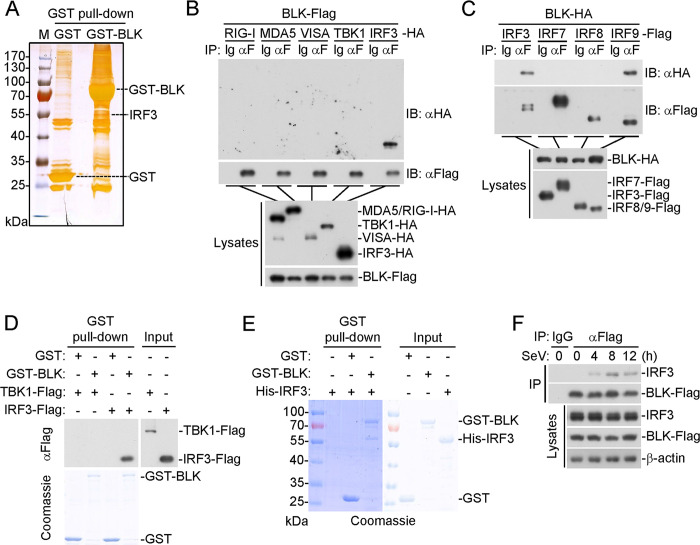Fig 5. BLK associates with IRF3.
(A) Identification of the BLK interactome by silver staining and mass spectrometry methods. Silver staining showing GST-associated factors (Control) and GST-BLK-associated factors. IRF3 was one of the convincing interacting factors. (B) BLK interacts with IRF3 in the mammalian overexpression system. HEK293 cells (2 × 106) were transfected with the indicated plasmids for 24 h. Coimmunoprecipitation and immunoblot analysis were performed with the indicated antibodies. (C) BLK interacts with IRF3 and IRF9. Coimmunoprecipitation and immunoblot analysis were similarly performed as in B. (D) BLK associates with IRF3. Prokaryotically expressed and purified GST-BLK protein coupled to glutathione sepharose beads was incubated with purified TBK1-Flag or IRF3-Flag protein for 3 h at 4°C and then subjected to in vitro GST pull-down assays. GST: glutathione S-transferase. (E) BLK directly binds to IRF3. Prokaryotically expressed and purified His-IRF3 and GST-BLK proteins were subjected to in vitro GST pull-down assays. (F) BLK associates with endogenous IRF3 upon SeV infection. Jurkat cells stably expressing BLK-Flag (2 × 107) were uninfected or infected with SeV (MOI, 1) for the indicated times. Coimmunoprecipitation and immunoblot analysis were performed with the indicated antibodies. Data are representative of at least three independent experiments with similar results.

